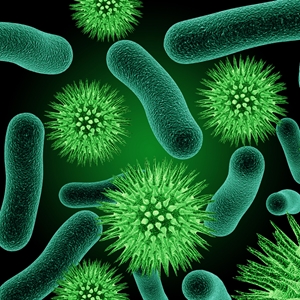Bacteria and microbes are constant concerns of the food manufacturing industry. As most of these organisms occur naturally though, they are not considered dangerous.
However, if their numbers increase significantly, it can become a problem for industries and public health. One industry expert believes that more emphasis should be placed on microbes and bacteria in relation to food safety and security.
Senior Lecturer in Food Microbiology at New Zealand’s Lincoln University Dr Malik Hussain has been studying food risks for a number of years. He has recently been invited as a representative of the university’s Centre for Food Research and Innovation to the Asian Food Safety and Security Association Conference to be held in Vietnam in August.
What does Dr Hussain believe the industry is doing wrong?
According to Dr Hussain, food safety and security concepts are only based around three main areas – food availability, food access and food use. However, he believes the focus should be around how bacteria and microbes interact with ingredients and how to manage their effects.
“For instance, although food availability is tremendously important, it doesn’t tell the whole story,” he said.
“Around one third of all food produced globally for human consumption goes to waste due to food safety issues such as spoilage and a loss of quality due to decay.”
How can microorganisms affect food?
Microorganisms have both a positive and negative impact on the food industry through economics and human health. Dr Hussain explained that if food manufactures can adequately control bacteria and microbe numbers than the whole process becomes more effective.
He said the end product will be of higher quality and take away the need for manufacturers to increase production levels because of bad stock.
“The matter is complicated further by the direct effect climate change has on microbiology as it relates to food safety,” he said.
“Climate change changes the ‘playing field’. Meaning the potential for some current microbes to gain greater influence, or for new pathogens to develop.”
What can be gained from the Asian Food Safety and Security Association Conference?
Bringing together minds from across the Asia/Pacific region, the conference will feature security scholars, entrepreneurs and government officials.
Dr Hussain hopes the conference will provide a good starting point for discussions in relation to food product safety and processing technologies. He also aims to address how industry businesses should be taking microbiological risks more seriously.
“It’s vitally important we stay on top of the microbiology aspects of food safety and security,” Dr Hussain explained.
“I have been putting my efforts into establishing training and research opportunities for industry and researchers alike.”
What can industry manufacturers put in place?
Depending on the what type of food your business manufactures, there are a number of tools available to control bacteria and microbes.
- Temperature
To monitor temperatures during transport or cooking, businesses could use a mini thermometer. This product can measure up to 300 degrees Celsius and record temperatures both in the air as well as in soft or powdery substances and in liquids.
- pH levels
For pH levels that are critical in monitoring bacteria and microbe levels in cheese, yoghurt and milk, you could use the 206 pH2 – pH kit for semi solids.
This tool is great for spot checks in factories to ensure levels are correct. The product is both leak-proof and maintenance-free. It is also safe to clean for multiple batches and products.
- Humidity levels
The environment’s humidity will also play a critical role in the quality of the food and bacteria levels. This can often happen during transport as conditions change.
To be aware of humidity levels, Testo offers 174H Set – Mini Humidity Data Logger. The logger can monitor building climate and storage temperature so microbes and bacteria can’t multiple during the journey.









 Reduce cooking oil costs while ensuring quality
Reduce cooking oil costs while ensuring quality Expert knowledge on CO2 monitoring
Expert knowledge on CO2 monitoring Refrigeration knowledge - in 3 modules
Refrigeration knowledge - in 3 modules



